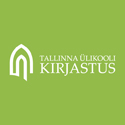Sillad ja konfliktid ida-lääne kunstiteljel: Ida-Euroopa kui „lähedase Teise“ kodustamine 1990. aastatel [Bridges and conflicts on the Eastern-Western art axis: the domestication of Eastern Europe as „close Other“ in the 1990s]
Abstract
Ülevaade. Artiklis pööratakse tähelepanu kolmele episoodile Ida-Euroopa mõistmises ja „kodustamises“ rahvusvahelises kunstidialoogis. Vaadeldakse Lääne- ja Ida-Euroopa kunstnike ja teoreetikute lähenemiskatseid 1990. aastatel läbi kolme dialoogi otsiva episoodi. Neist üks käsitleb meililisti Syndicate lagunemist ja vahetumist listiga Spectre. Teine käsitleb konflikti 1996. aastal näitusel „Interpol – a global network from Stockholm and Moscow“. Kolmas juhtum on seotud Peeter Linnapi korraldatud näitusega „Le Top 50“ (1994), kus prooviti astuda otsekontakti lääne kuns- timaailma tippudega. Viimase näite täiendusena käsitletakse Kaisa Eiche 2021. aastal läbiviidud eksperimenti. Artikkel näitab, et Ida-Euroopast pole enam võimalik rääkida „lähedase Teise“ võtmes. Ta on „mitte-Teine“.
Võtmesõnad: „lähedane Teine“, konfliktid, kunstidialoog, transnatsionaalsus, translokaalsus, horisonaalne ja vertikaalne kunstiajalugu, Ida-Euroopa, „Süva-Euroopa“
Abstract. The article pays attention to three episodes in understanding and accommodating Eastern Europe art to the international dialogue. I focus on the reciprocal approaches between West- and East- European artists and theoreticians to seek mutual understanding which sometimes resulted in conflicts. In the first case I follow the disintegration of the Syndicate mailing list and emergence of the new Spectre list. The second case is dedicated to the conflict at the exhibition “Interpol – a global network from Stockholm and Moscow“ in Stockholm in 1996.
The third discussion is based on Peeter Linnap’s exhibition “Le Top 50“ (1994) in Tallinn, where organizers tried to make connections with the prominent authorities of the art world. As an addition to the last case I discuss a similar experiment by Kaisa Eiche in 2021, who got even less response than Linnap earlier. This assures that East Europe cannot be treated as „close Other“. It is not different and is „not-other“, it belongs to Europe by its formal status and is included culturally as well.
East Europeans have maintained subjectivity, but they cease to be defined externally. They are taking power positions over their works: they are not seeking approval from the western mirror. However, it also illustrates the paradox of digital communication, because of the abundance of information and filters of communication, the reciprocal building of bridges is still fraught with complexity.
Keywords: „close Other“, conflicts, art dialogue, transnationality, translocality, horizontal and vertical art history, Eastern Europe
Full Text:
PDFDOI: https://doi.org/10.22601/PET.2021.06.07
Refbacks
- There are currently no refbacks.
Published by / Kirjastaja:

ISSN 2504-6616 (print/trükis)
ISSN 2504-6624 (online/võrguväljaanne)
